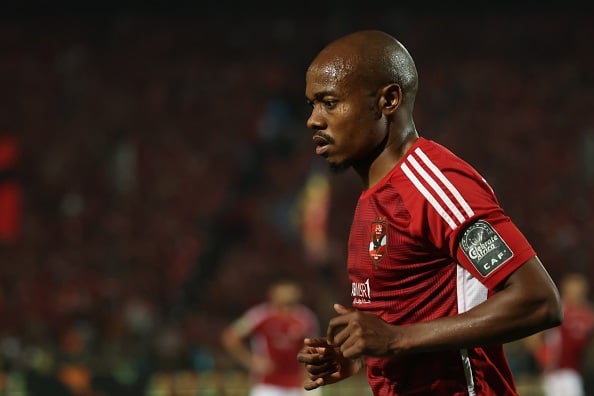
SANTA CLARA, Calif. — If you want to avoid long security lines at Levi’s Stadium on Monday, enter through Gate F. It’s the venue’s least-used entrance, with only about 12 percent of fans using it on game days.
If you want to avoid ugly fan behavior, consider attending one of the San Francisco 49ers’ games against an AFC opponent. They tend to be less charged with fewer arrests — unless, of course, the Las Vegas Raiders are in town. Advertisement If you’re chilly at halftime, try a hot chocolate; the facility keeps extra on hand for night games.

The 49ers and stadium officials have been keeping track of these things since their first prime-time event, a 28-20 loss to the Chicago Bears on Sept. 14, 2014. They now have 10 years’ worth of data about when fans will arrive, which food items will be the most popular, when shoppers will hit the team store and how long it will take to empty the parking lot.
Has the data resulted in a better experience at Levi’s, which didn’t get many rave reviews in its inaugural season? Here’s a 10-year checkup on some of the issues the $1.2 billion venue was facing back then. Still fighting the sun When the 49ers moved from Candlestick Park, their home from 1971 to 2013, they noted their new stadium would be open to the elements so it could embrace the South Bay’s consistently sunny weather.
Most fans think they’ve embraced it too much. A persistent complaint since the venue opened has been that the east side of the stadium, which holds the most fans, faces and is roasted by the sun, at least until it dips behind the suite tower on the west side. That hue and cry was renewed last month when the team announced $200 million worth of upgrades, none of which included measures to add more shade.
One commenter to a story about the upgrades said games were “unwatchable” through October. “Disappointed the changes are fundamentally cosmetic and not addressing this core flaw in the stadium design,” he wrote . The 49ers say they’ve looked into everything from misters to shade but concluded nothing is feasible.
A structure that shades the east stands would have to be so substantial it would run afoul of FAA regulations related to nearby San José Mineta International Airport. Instead, the 49ers have addressed the issue through avoidance. Over the past three years, they haven’t had a preseason game that started before 5:10 p.
m. Pacific time. Monday night’s game will kick off at 5:15 p.
m., the same time as last season’s home opener. The team’s first early afternoon home game will be Sept.
29 against the New England Patriots . Pick up The Athletic 2024 Fantasy Football Guide to read expert evaluations & everything you need to know to win your fantasy football league. Pick up The Athletic 2024 Fantasy Football Guide to read expert evaluations.
“We’ve really pushed for that,” CEO Jed York said of trying to schedule around the hottest times of the year. “Obviously, the NFL has 32 different teams they need to work with as far as scheduling. But they’ve been great and willing to help us.
” Juli Balestrieri, a season ticket holder for 16 years, said that though her seats are in the south end zone, she still gets sun. If it’s particularly bad, she’ll head down into the concourses until it starts to set. “Somewhere in the third quarter we end up getting shade, which is kind of nice,” she said.
“And I did appreciate the fact that the most recent preseason game was a 5 o’clock start so we weren’t sitting in the blazing sun on an August afternoon.” GO DEEPER Levi's Stadium guide: What to know about the San Francisco 49ers' home field Violence in the stands This was a major issue during the 49ers’ last few seasons at Candlestick Park, including a preseason game against the Raiders in 2011 that was so full of mayhem — two men were shot and a third was beaten unconscious — that the teams’ annual meeting was suspended. That behavior spilled over into Levi’s early on.
Santa Clara police reported 214 arrests, the most ever for a season at Levi’s, in 2014. That included an assault in one of the men’s rooms before a game against the Kansas City Chiefs ; the victim had to have surgery to relieve swelling in his brain . “The first couple of years there were fights all the time,” season ticket holder Tom Amendola, 51, said.
“There was one time when a guy got punched in the nose and blood went all over my seat. It was pretty bad.” But Amendola said that type of behavior seems to have diminished in recent seasons, and the statistics support his observation.
Over the past three seasons, there have been an average of 41 arrests in and around Levi’s during 49ers games. Advertisement Security officials said a combination of factors were probably at work, including that fan behavior might have changed since the 2020 season, when the stadium was closed because of the COVID-19 pandemic. “I think people are probably just happy to be able to see games again,” Lt.
Mike Crescini of the Santa Clara Police Department said. The stadium also is equipped with camera technology — more than 800 that can monitor everything, including the back number of every seat in the stadium — that Candlestick didn’t have. Though that hasn’t prevented crime, it has led to a better arrest rate.
The bathroom attackers in 2014, for example, were arrested before they returned to their seats, in part because security officials were able to locate and track the assailants on camera. Bad behavior also often hinges on the opponent. For example, there was just one arrest each during games last season against the Cincinnati Bengals and Tampa Bay Buccaneers , two franchises with fan bases not known for showing up on the road.
The Oct. 8 game against the Dallas Cowboys , however, had 22 arrests, and the NFC Championship Game against the Detroit Lions had 21, the two highest counts since the pandemic. Gridlock exiting the stadium This was another loud complaint after the stadium opened.
The home opener against the Bears was close until the end, which meant 60,000 or so fans exited at once, and some were stuck in the parking lot for more than two hours. There were reports of fans knocking down chain-link barriers and driving over medians to get out. Exit times have improved since, as the team, city and fans have become more savvy about how to empty the stadium.
More fans also started using public transit. The Valley Transit Authority, for instance, reported that 9,400 fans used its trains and buses for the Bears game 10 years ago. For the most recent home game, the NFC Championship on Jan.
28, that number more than doubled to 18,990, and the 49ers reported a 7 percent uptick in public transit for “Monday Night Football” games as fans try to avoid afternoon traffic. Advertisement For reference, the record for Levi’s Stadium VTA ridership is 22,000 for the Taylor Swift concert in July 2023. Still, team officials said gridlock never will go away, especially after tight contests.
Francine Melendez Hughes, the executive vice president and general manager of stadium operations, noted that while most new venues have parking and exits 360 degrees around the facility, roughly 20 percent of cars park in the garage to the north of Levi’s Stadium and the rest are in the lot to the west of it. “And we’ve got one main artery, which is Great America Parkway,” she said. “So if you’re coming from 237 or the 101, you have one road to come in.
” Free, daily NFL updates direct to your inbox. document.querySelectorAll(".
in-content-module[data-module-id='scoop-city-newsletter'] .in-content-module-img img ").forEach((el) => { el.
setAttribute("style", "pointer-events: none;");}) Free, daily NFL updates direct to your inbox. A change in the atmosphere The final gripe about Levi’s 10 years ago was that the new place lacked personality. Yes, Candlestick was cramped and drafty, and female fans sometimes missed a full quarter of football while waiting in line for one of the few restrooms.
But it also was familiar, cozy and where fans had watched Joe Montana, Dwight Clark, Jerry Rice and five Super Bowl champion teams. Levi’s, by contrast, is located 50 miles south of San Francisco and built amid office parks and technology companies. And the 49ers have fully taken to their Silicon Valley location, touting tech that allows fans to order food from their seats and check fantasy football stats on their phones.
Their recent $200 million investment includes new WiFi and some of the largest, most vibrant scoreboards in the NFL. New to Levi’s Stadium this season — frictionless checkout. (Limit: two brews per person).
pic.twitter.com/hmOy55P3WP — Matt Barrows (@mattbarrows) September 5, 2024 That’s being done partly to get the stadium ready for two big events in 2026: the Super Bowl and the World Cup.
York, however, also said that was the plan all along — to make substantial upgrades every decade or so, so the facility doesn’t become outmoded. He said when the team was in the design phase, it studied Kansas City’s Arrowhead Stadium, which opened in 1972 and has been regularly updated since. Advertisement “Obviously, Arrowhead matured much differently than Candlestick did,” York said.
“We looked at that as a very good model, knowing that if you spend $1.2 billion to build a stadium, you don’t want to see it quickly depreciate. You want to make sure you can invest and reinvest in that stadium.
” (Worth mentioning: The Chiefs are actively looking at options to replace the 52-year-old Arrowhead Stadium , either with a new facility in Missouri or across state lines in Kansas, though they haven’t ruled out further renovations to Arrowhead to remain there past the 2030 expiration of their lease.) York said he thought it was natural that fans might initially be hesitant about a new stadium. It didn’t help that the Bears game, the first regular-season game there, was a loss, as were three others in that inaugural season.
In fact, the 49ers went 16-24 at home in their first five years in the building. They began winning in 2019, and it’s probably no coincidence that Levi’s started getting better reviews around then, too. “For me, 90 percent of the game day experience is the quality of the product on the field, honestly,” Amendola said.
“You have to give the building time for your fans and your patrons to just realize how to use the building,” York said. “If you’ve been to Candlestick for 40 years, even if it’s a newer stadium and there’s nicer amenities, it’s just not something that you’re used to. And then you end up having memories that start in probably the 2019 season when you host two playoff games and you win an NFC Championship Game, and that changes the perception and the feeling and the vibe in your building.
It takes time to build those things out and make them feel like their own.” The question is whether, after four championship game appearances in five seasons, the Levi’s atmosphere has reached the level of Candlestick. “I think there is a slightly different vibe,” Balestrieri, 51, said.
“And I think it has to do with the fact that a lot of the longtime fans got priced out of going to Levi’s. ..
. At least the first few years, I noticed a lot of people on their phones — ‘Look at me! I’m here at this game!’ — on social media tweeting about it, Instagramming about it, Facebooking about it. They’re there to say, ‘Hey, I can afford to go to this game,’ not so much, ‘I’m here because I’m a 49er fan and I’m here to watch the football.
’” (Top photo: Omar Vega / Getty Images).







-and-Aiden-Upward-produced-a-65-run-partnership.jpeg?auto=webp&width=1200)






